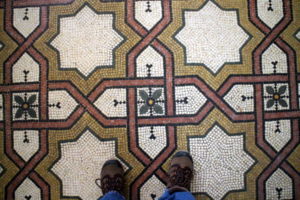
Modern Byzantine and Roman mosaics.
- The floor mosaics are made of stone and laid following rather simple geometric patterns in a classical Roman style
- The mural and ceiling mosaics are made of glass in the Byzantine style. They are of much more colorful and were laid following much more intricate designs.
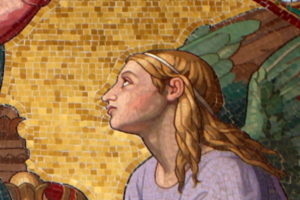
The Basilica is dedicated to the Virgin Mary and many motives laid in the mosaics are Christian symbols dating back to the Middle ages or earlier.
Inside the basilica
Except for the side walls on which the ex-votos are displayed, all the walls of the Basilica are covered with modern byzantine mosaics.

The main mosaic of the cul-de-four of the apse
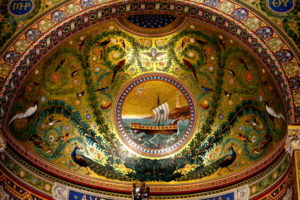
Surrounded by dolphins the boat, symbol of the Church, sails on a rough sea: the Church is often tossed by the events of the world. Its sail bears the monogram of the Virgin Mary and, in the sky above, the M-shaped radiating star recalls that Mary also is “the star of the seas”. She protects the boat of the Church in its journey towards the harbour to the right, dominated by a lighthouse surmounted by the cross of Christ: Mary helps the Church progressing towards Christ.
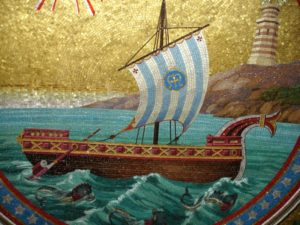

There is something terrible about mosaic dolphins. Mosaicists must not like sailing, their dolphins always look like monsters whereas their birds look gorgeous…
The ship medallion is surrounded by magnificent arrangement of foliages and birds: in the middle, a dove symbolizes the Holy Spirit attended on each side by many birds of different species : golden pheasant, goldfinch, heron …

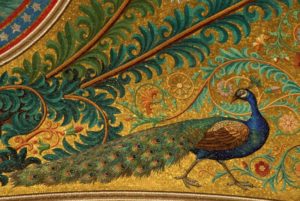
Peacocks are a symbol of eternal life and resurrection in early Christian religion. The peacock angel is also a central figure of the Yazidi religion.
This very harmonious composition is one of the most beautiful mosaics built in a French sanctuary during the 19th century.
The Annunciation
The Annunciation mosaic stands above the great mosaic of the apse. The archangel Gabriel visits the Virgin Mary to ask her if she accepts to be the mother of the Messiah. After a dialogue with the angel, she gives her acquiescence: “I am the handmaid of the Lord, let everything happen to me as you have told me”.
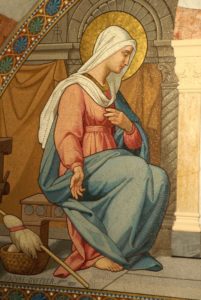
The big dome.
Above the choir, four angels support a large crown of flowers.
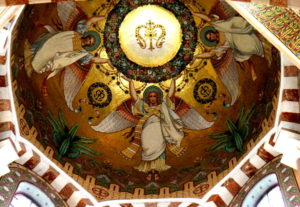
The 3 smaller domes.
The three domes above the nave are covered of gold mosaics, embellished with birds and flowers:
- white flowers in the dome nearest the choir,
- blue flowers in the central dome.
- red flowers in the dome closer to the entrance.
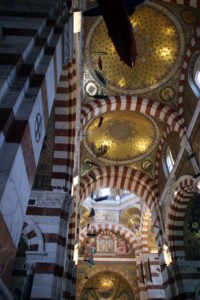
Each dome is circled by a white banner inscribed in Latin and Greek with quotes from Western and Eastern scriptures relating the life of Mary. They are illustrated by beautiful medallions located under them.
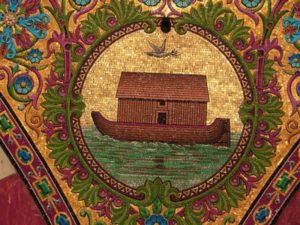
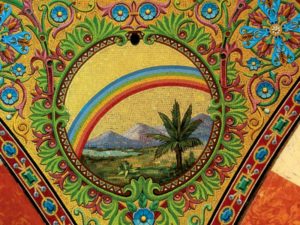
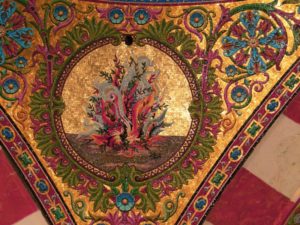
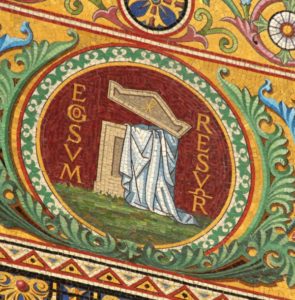
The transepts vaults
The lower parts of the two transepts of the choir are inspired by the dark blue mosaics of the 5th century mausoleum of Galla Placidia in Ravenna.
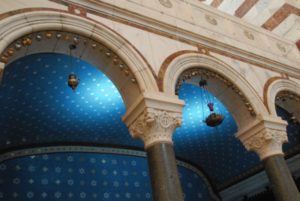
These vaults also display 6 different coat of arms of Pope and Bishops.
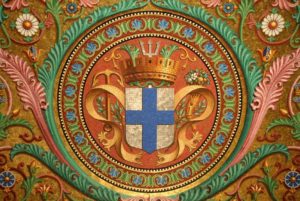
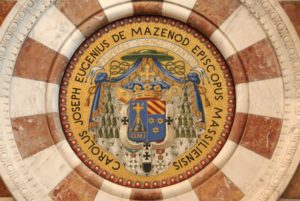
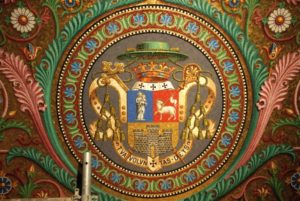
The Side chapels
Six lateral chapels are dedicated to :
- Saint Joseph,
- Saint Lazarus (in the Middle Ages, people believed Lazarus had been the first bishop of Marseilles)
- Saint Charles Borromeo, Archbishop of Milan in the sixteenth century.
- Saint Peter.
- Saint Mary Magdalene.
- Saint Roch.
Each chapel also displays the name and the coat of arms of the families who financed their decoration and an altar decorated with small but beautiful work in Opus Sectile.
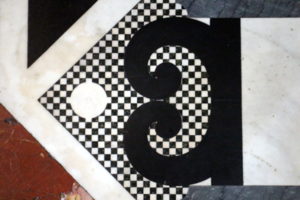
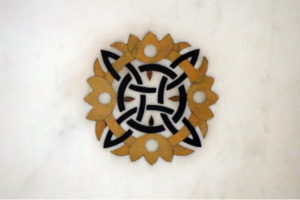
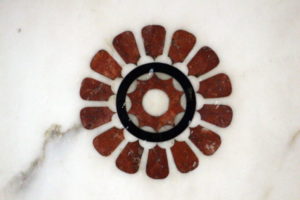
Visit Notre Dame de la Garde :
Basilica of our Lady of the Guard
Rue Fort du Sanctuaire, 13006 MARSEILLE
+33 (0) 4 91 13 40 80
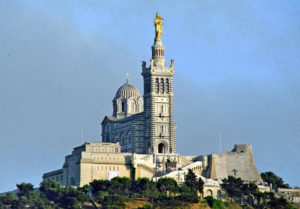
GPS :
Latitude: 43° 17′ 1.50″ N
Longitude: 5° 22′ 9.59″ E